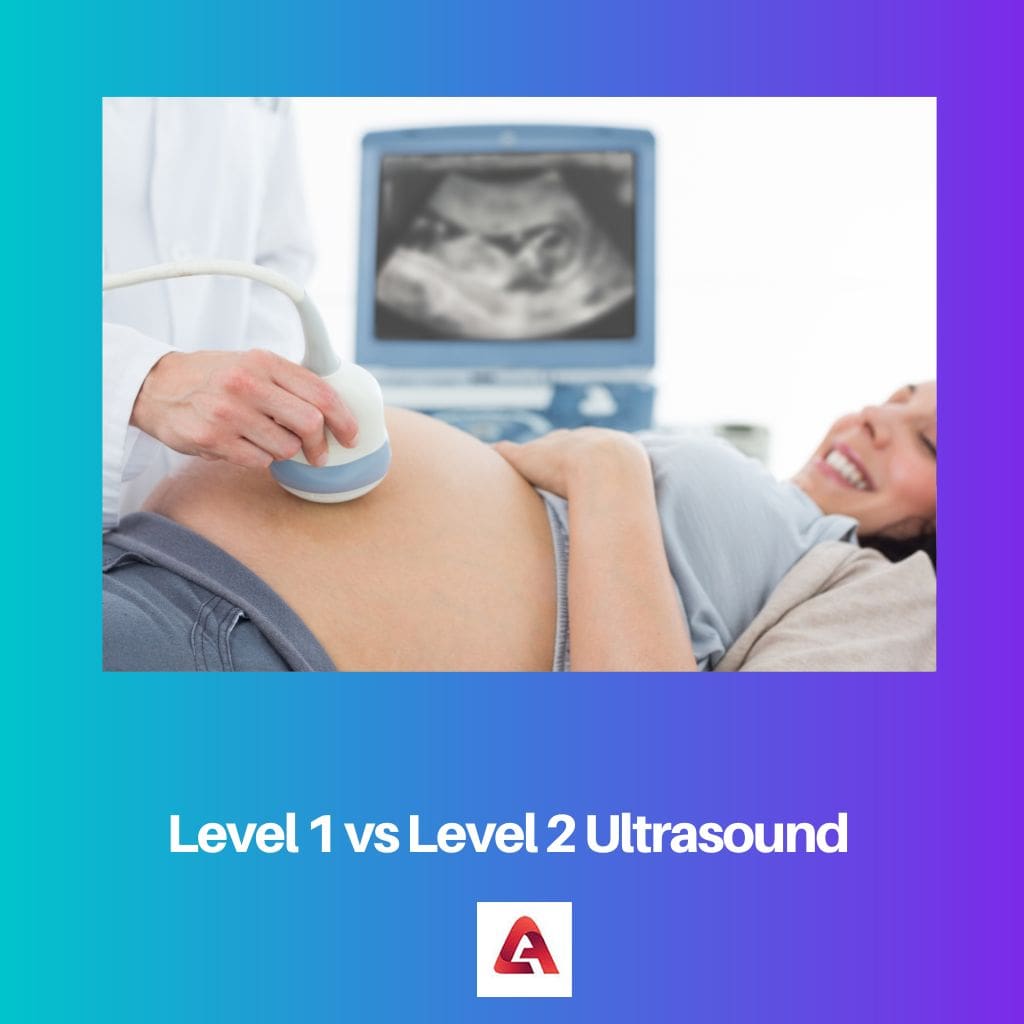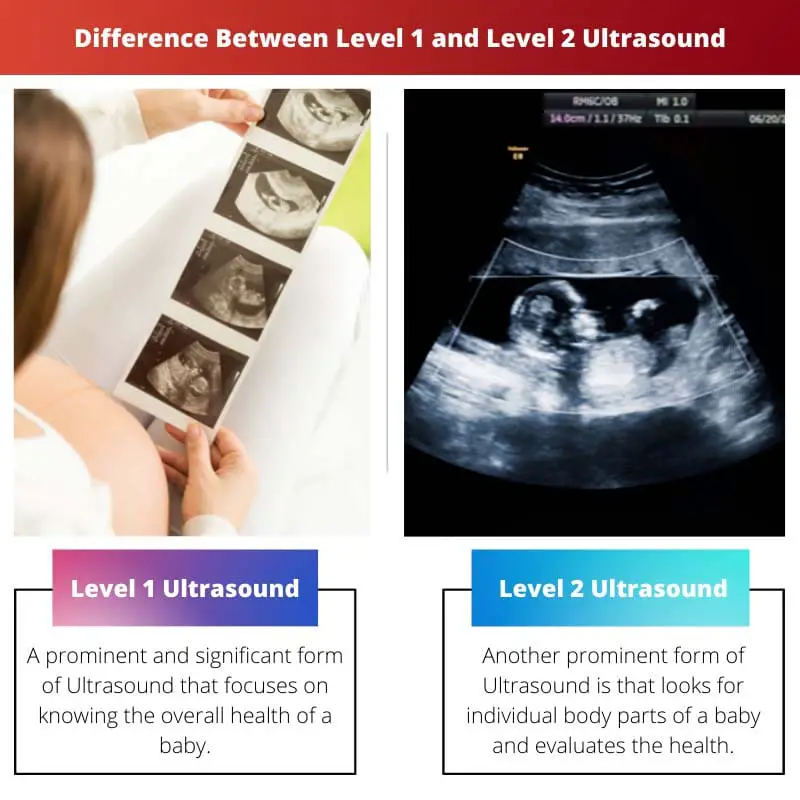Many of us have heard about ultrasound and what the utilization of ultrasound is. It is a medical test performed to check the baby’s and mother’s health during the pregnancy.
But there are multiple levels in ultrasound, and it is important for any prudent person to know the differences between these levels.
Level 1 and Level 2 Ultrasounds are the two most common types of pregnancy ultrasounds and are used for different purposes. These two can be very confusing as they correlate with each other a lot, but it is important to mark a line of difference between these two.
Key Takeaways
- Level 1 ultrasound provides basic information about the baby’s development, whereas Level 2 ultrasound offers a detailed examination of the fetus’s anatomy.
- Level 2 ultrasound helps identify potential anomalies and health issues, while Level 1 ultrasound focuses on checking the baby’s growth and position.
- Medical professionals use Level 1 ultrasound for routine prenatal screenings, while Level 2 ultrasound is performed when there are concerns or risk factors.
Level 1 vs Level 2 Ultrasound
Level 1 ultrasound, also known as a basic or standard ultrasound, is performed between 18 to 20 weeks of pregnancy. It is done as a routine screening test for all pregnant women to assess fetal well-being. Level 2 ultrasound, also known as a targeted or specialized ultrasound, is a more detailed ultrasound that is performed when there is a suspected fetal anomaly or a higher risk of a fetal abnormality.

Also called a growth scan, a Level 1 Ultrasound is defined as an ultrasound that is done in the second trimester of the pregnancy to check whether the growth of the baby is happening in the right direction or not.
It happens to be an overall health check and focuses upon the over health and well-being.
But on the contrary, a Level 2 Ultrasound, also known as an anomaly scan, is done before the level one ultrasound. It occurs during the 20th week of pregnancy and checks whether each and every part of the baby is growing in the right direction or not.
It focuses on individual body parts and predicts the overall status.
Comparison Table
| Parameters of Comparison | Level 1 Ultrasound | Level 2 Ultrasound |
|---|---|---|
| Meaning | A prominent and significant form of Ultrasound that focuses on knowing the overall health of a baby. | Another prominent form of Ultrasound is that looks for individual body parts of a baby and evaluates the health. |
| Another name | Also known as Growth Scan. | Also known as Anomaly scan. |
| Purpose | It focuses on checking the position of the baby and the presence of fluids in the placenta. | It focuses on checking whether the baby is alone or a twin or what is the gender of the baby or the functioning of body parts. |
| Time duration | It takes place during the second trimester of pregnancy usually. | This occurs during the 18th to 20th week of pregnancy usually. |
| Length of process | It takes approximately 10 to 15 minutes to perform. | It takes approximately an hour to perform as it happens to be a detailed one. |
What is Level 1 Ultrasound?
Known by another name that is growth scan, a Level 1 Ultrasound happens to be the most prominent and primary level of Ultrasound that happens to check the overall growth of a baby.
Looking at the time duration of this ultrasound, this takes place during the second trimester of pregnancy and looks for general conditions or situations.
The unique feature of this procedure is that it takes only 10 to 15 minutes to complete and happens to be really quick.
This ultrasound checks the following elements of a pregnancy-
- The position of the baby (It is checked the position in which the baby is. The ultrasound checks the position of the uterus and whether it is situated in the right place or not)
- Growth of the baby (this ultrasound checks if the baby is growing in perfect conditions or not. )
- Presence of liquid in the uterus (this ultrasound checks that the liquid and fluid required in the uterus is present in a sufficient amount or not. It checks the lack or excess of the fluid)

What is Level 2 Ultrasound?
Also called the Anomaly scan, a level 2 ultrasound happens to be a very prominent form of ultrasound happening during pregnancy. It happens during the 18th week, but the time period may exceed or reduce one or two weeks positively or negatively.
This ultrasound focuses on the growth of a baby looked at from the perspective of each of its body parts. It checks whether each and every body part of a body is growing well or not.
As this ultrasound takes place in the 18th to 20th weeks, it gives a much clear view of the images.
This ultrasound checks the following elements of a pregnancy-
- How many babies are there? (It checks whether the baby is single or there are twins)
- The shape of the head (It checks whether the shape of the head is fine or not0
- External features (It checks external parts such as the legs, hands, etc.)
- Internal features (It checks internal parts such as the liver or kidney, etc.)

Main Differences Between Level 1 and Level 2 Ultrasound
- Level 1 Ultrasound is a prominent and significant form of Ultrasound that focuses on knowing the overall health of a baby. But on the contrary, Level 2 Ultrasound is another prominent form of Ultrasound that looks for individual body parts of a baby and evaluates the health.
- Level 1 Ultrasound is also known as a growth scan, but the Level 2 Ultrasound is also known as an anomaly scan.
- Level 1 Ultrasound focuses on checking the overall health of the baby, but Level 2 Ultrasound focuses on checking the body part-wise growth of the baby.
- Level 1 ultrasound happens during the second trimester of the pregnancy, while Level 2 ultrasound happens in weeks from 19th to 22nd weeks.
- Level 1 ultrasound takes less time to perform, while level 2 ultrasound takes around an hour.




